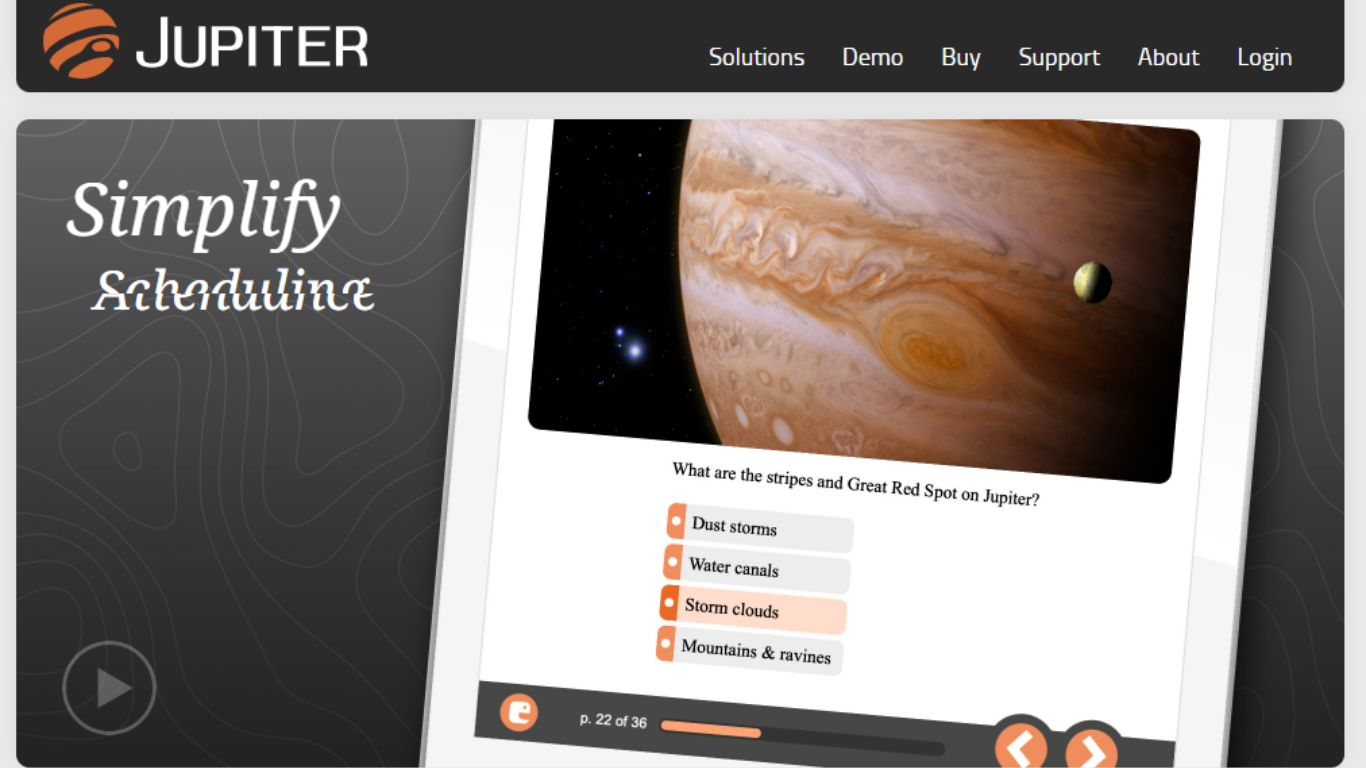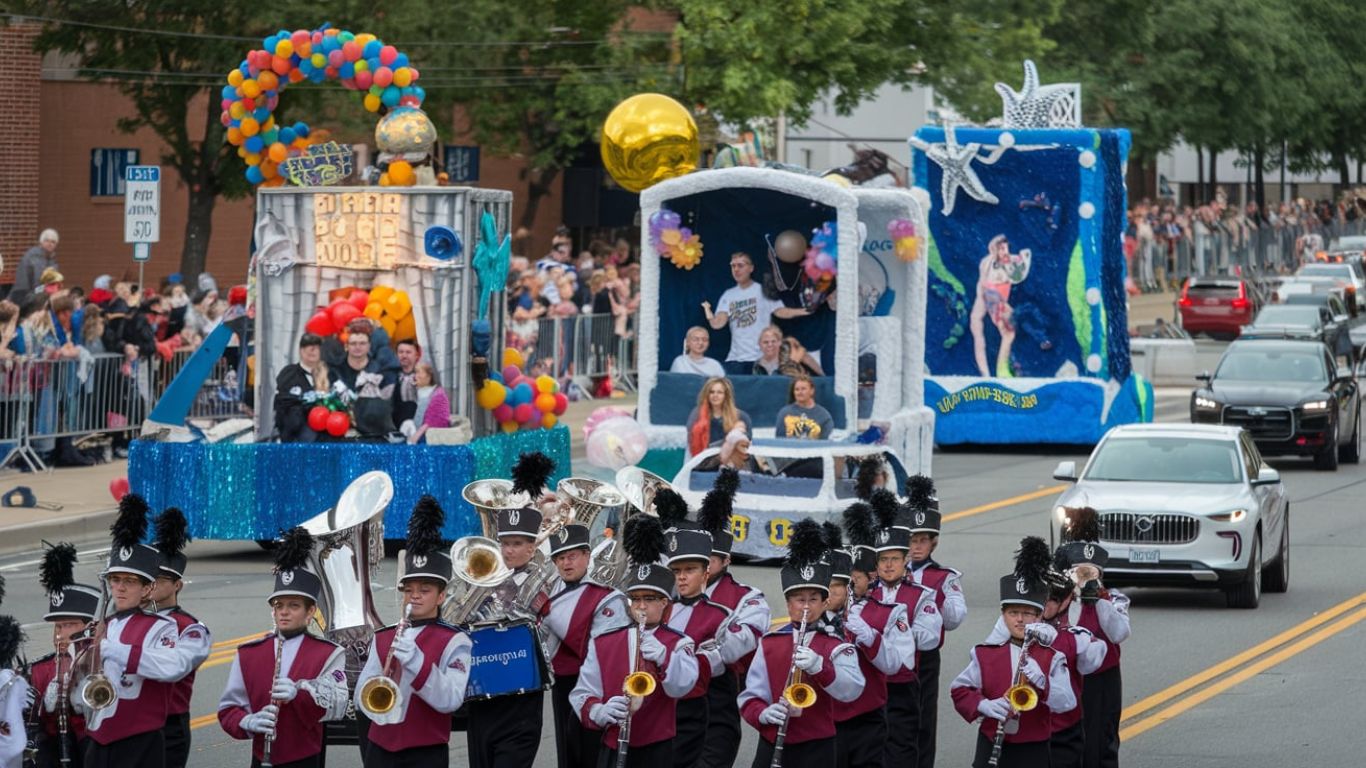Education
Jupiter Ed – Easy Grade Management & School Communication

What is Jupiter Ed?
Jupiter Ed is an online learning management system (LMS) designed for schools to manage classes, assignments, and grades. It’s widely used by K-12 schools and even higher education institutions. As a cloud-based platform, it makes communication between teachers, students, and parents simple and efficient.
The main purpose of Jupiter Ed is to streamline the educational experience. It provides tools for grading, sending messages, and tracking student progress. Schools often choose Jupiter Ed for its all-in-one design, which reduces the need for multiple platforms.
Key Features of Jupiter Ed
Gradebook Management: Teachers can easily input grades, calculate averages, and customize grade weights. The system automatically updates reports, reducing manual work.
Communication Tools: Messaging features allow teachers to send announcements and updates directly to students and parents. It supports real-time communication for quick feedback.
Homework and Assignments Tracking: Students can view assignments, submit work online, and track deadlines. Parents also get updates on their child’s progress.
Online Quizzes and Tests: Teachers can create and manage quizzes using various question formats. Instant grading for multiple-choice questions saves time.
Distance Learning Capabilities: With Jupiter Ed’s remote learning features, students can attend classes, access resources, and participate in discussions from anywhere.
How to Use Jupiter Ed
For Students: Logging in is easy. Visit the official Jupiter Ed website, enter your username and password, and access your dashboard. From there, you can check assignments, grades, and teacher messages.
For Parents: Parents can log in using the credentials provided by the school. They can track their child’s progress, view grades, and communicate with teachers.
For Teachers: Teachers access a dedicated dashboard to manage classes, input grades, and monitor student performance. With a clean interface, it’s simple to navigate and customize grading scales.
Benefits of Using Jupiter Ed
Jupiter Ed offers several advantages to schools and educators. First, it simplifies grading and reporting. Teachers no longer need to rely on manual calculations since the system does it for them.
Communication becomes more transparent with instant messages and notifications. Parents stay informed about their child’s academic progress, making collaboration easier. Additionally, remote learning features ensure uninterrupted education, even during school closures.
Student progress tracking is another highlight. Teachers get real-time insights into performance, allowing them to provide timely support. This also helps students stay motivated and accountable.
Comparing Jupiter Ed to Other Platforms
Google Classroom vs. Jupiter Ed: While Google Classroom is mainly a collaboration tool, Jupiter Ed offers a more comprehensive solution. It includes grading, analytics, and communication features that Google Classroom lacks.
Other platforms may require additional tools for student information management. Jupiter Ed eliminates that need with its built-in Student Information System (SIS). Schools often find this integration more efficient and cost-effective.
Frequently Asked Questions (FAQs)
Is Jupiter Ed free? No, Jupiter Ed is a paid platform. Schools can request pricing based on their needs and student count.
How can parents check grades? Parents can log in to their account using the credentials provided by the school. They will have access to grades, assignments, and teacher comments.
Can students submit assignments online? Yes, students can upload assignments directly through the platform. Teachers can grade submissions and provide feedback online.
Is there a mobile app for Jupiter Ed? Yes, Jupiter Ed has a mobile-friendly website. Schools can provide additional information on app options or recommend accessing it via a browser on phones and tablets.
Education
What is Homecoming? A Complete Guide to High School Celebrations and Traditions

Homecoming is a long-standing tradition in many American high schools and colleges. It is a time for students, alumni, and faculty to come together and celebrate their school spirit, usually through various events, including a big football game, a dance, and a parade. But what exactly is homecoming, and how does it differ from other school events? Let’s dive in and explore everything you need to know about this exciting occasion.
What is Homecoming?
Homecoming is an annual tradition in schools across the United States, where former students (alumni) return to their alma mater to celebrate their school spirit. It typically involves a week of festivities, including pep rallies, themed dress-up days, parades, and a football game, culminating in a dance. Unlike prom, which is usually exclusive to upperclassmen, homecoming is open to all students.
The Origin of Homecoming
The tradition of homecoming dates back to the early 20th century, with several universities claiming to have started it. The University of Missouri, Baylor University, and the University of Illinois all take credit for initiating the first official homecoming celebrations. However, the common factor among all these events was a football game that encouraged alumni to “come home” and celebrate their school’s legacy.
What is Homecoming in High School?
Homecoming in high school is often one of the most anticipated events of the year. Unlike college homecomings, which focus more on alumni returning, high school homecoming emphasizes school spirit and community engagement. It usually includes:
- Spirit Week – Themed dress-up days, friendly competitions, and pep rallies to build excitement.
- Homecoming Game – A major football game where the home team competes against a rival.
- Homecoming Parade – Floats, marching bands, and clubs showcase their school pride.
- Homecoming Dance – A semi-formal event where students dress up and celebrate with music and dancing.
- Homecoming Court – Students vote for a homecoming king and queen, who are crowned during the halftime show or dance.
What is High School Homecoming Like?
High school homecoming is a blend of sports, fun, and tradition. The energy on campus during this time is unmatched, as students and faculty come together to show their school pride. Freshmen experience it for the first time, while seniors cherish their final homecoming moments. It’s a week filled with excitement, laughter, and unforgettable memories.
How is Homecoming Different from Prom?
Many students wonder how homecoming compares to prom. While both are important school events, they have distinct differences:
- Homecoming is inclusive – Open to all grade levels, unlike prom, which is typically reserved for juniors and seniors.
- Casual vs. Formal – Homecoming is semi-formal, while prom is more formal.
- Timing – Homecoming occurs in the fall, while prom takes place in the spring.
- Activities – Homecoming includes a parade, game, and spirit week, whereas prom mainly consists of a formal dance.
What to Wear to Homecoming?
Dressing for homecoming depends on your school’s dress code and theme. Generally, students opt for semi-formal attire:
- For Girls: Short or knee-length dresses, stylish yet comfortable heels, and elegant accessories.
- For Boys: A button-up shirt, dress pants, and sometimes a blazer or tie.
Unlike prom, homecoming dresses are less extravagant, and suits aren’t always required.

what is homecoming in high school
What is Considered Too Much for a Homecoming Dress?
While homecoming fashion is a big deal, it’s important to choose an outfit that aligns with your school’s dress code. Here are a few things to consider:
- Overly Formal Attire – Long gowns and tuxedos are usually reserved for prom.
- Excessive Sparkle – A little glam is great, but too much can be overwhelming.
- Revealing Dresses – Most schools have guidelines about dress length and cut.
- Uncomfortable Shoes – Avoid extremely high heels that make dancing a challenge.
It’s all about balance—being stylish while staying comfortable and appropriate for the event.
Tips for Enjoying Homecoming
Want to make the most of your homecoming experience? Here are some useful tips:
- Plan Your Outfit Early – Don’t wait until the last minute to find the perfect look.
- Get Involved – Participate in spirit week and homecoming activities.
- Attend the Game – Even if you’re not into sports, the homecoming game is a fun way to bond with classmates.
- Dance and Have Fun – The dance is a highlight, so let loose and enjoy the moment.
- Capture the Memories – Take photos with friends and make it a night to remember.
Why is Homecoming Important?
Homecoming is more than just a dance; it’s a celebration of school spirit, unity, and tradition. It brings together students, teachers, alumni, and the community, fostering a sense of belonging and pride. Whether you’re a freshman experiencing it for the first time or a senior enjoying your last homecoming, it’s a cherished part of the high school experience.
Conclusion
Homecoming is one of the most exciting and meaningful traditions in high school, filled with events that create lifelong memories. From pep rallies to the big game and the unforgettable dance, it’s a celebration that unites the entire school community. Whether you’re dressing up, cheering in the stands, or dancing the night away, homecoming is all about having fun and embracing school spirit.
FAQs
1. Can freshmen attend homecoming?
Yes! Homecoming is open to all students, unlike prom, which is usually limited to juniors and seniors.
2. Do you need a date for homecoming?
Not at all! Many students go with friends or even solo and still have an amazing time.
3. How long does homecoming last?
The homecoming dance typically lasts a few hours, but the entire celebration, including spirit week and the football game, lasts about a week.
4. Can you wear jeans to homecoming?
Most schools encourage semi-formal attire, so jeans are generally not recommended for the dance.
5. Is homecoming only for football teams?
No! While football is a big part of the celebration, homecoming is for everyone, including students in different clubs and organizations.
-

 Entertainment9 months ago
Entertainment9 months agoMangapill – Everything You Need to Know
-

 Blog4 months ago
Blog4 months agoMinecraft Kidnap Mod – Features, Use Cases & Roleplay Ideas
-

 Food9 months ago
Food9 months agoBest Types of Cheese for a Cheese Platter
-

 Tech9 months ago
Tech9 months agoThe Big Heap: A Deep Dive into its Concept, Significance, and Impact
-

 Drying8 months ago
Drying8 months agoMonkey Drawing: Easy Step-by-Step Guide for Kids & Beginners
-

 Entertainment8 months ago
Entertainment8 months agoJinx Manhwa: A Deep Dive into the BL Sensation
-

 Education9 months ago
Education9 months agoWhat is Homecoming? A Complete Guide to High School Celebrations and Traditions
-

 LifeStyle9 months ago
LifeStyle9 months agoRamo Buchon: The Ultimate Luxury Bouquet for Every Occasion
